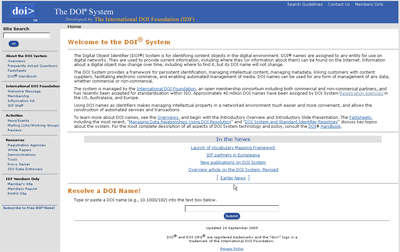People who publish in mainline academic journals may have found that:
- A strange series of letters and numbers has been linked to their works.
- Book publishers are inserting various strings of alphanumeric symbols in their References lists.
These are permanent digital object identifiers (DOIs), with the goal of each object having a globally unique identifier into perpetuity (forever). See www.doi.org for details.
The International DOI Foundation (www.doi.org/welcome.html), a nonprofit organization founded in 1998, brings together both commercial and noncommercial partners into a consortium.
The main purpose of DOIs is to link contents with a permanent identifier that makes them more findable (searchable) and interoperable (able to interact with various systems) in the wilds of the World Wide Web and the Internet. This identifier also enhances machine awareness of digital objects and their relationships with other objects. This identification system enables the building of knowledge structures that show relationships between digital contents (as in ontologies and taxonomies).
The use of a DOI name may be resolved or clarified using the search bar on the DOI main page.
The main contents of a DOI name are a prefix, the directory code, the registrant or publisher code, and the suffix. DOI Registration Agencies implement this system around the world. Currently, some 40 million original identifiers have been assigned. Usually, a fee is required for the registration of various objects.
Identification numbering has long been used with books (ISBNs), journals (ISSNs), recordings (ISRCs), technical reports (ISRNs), music (ISMNs), audiovisuals (ISANs), musical works (ISWCs), versions of audiovisual works (V-ISANs), and international standard text codes (ISTCs).
The concept of a universal document identifier was proposed by the “founder of the Web,” Tim Berners-Lee, back in 1992 and was expressed in 1994 as a uniform resource locator (URL).
